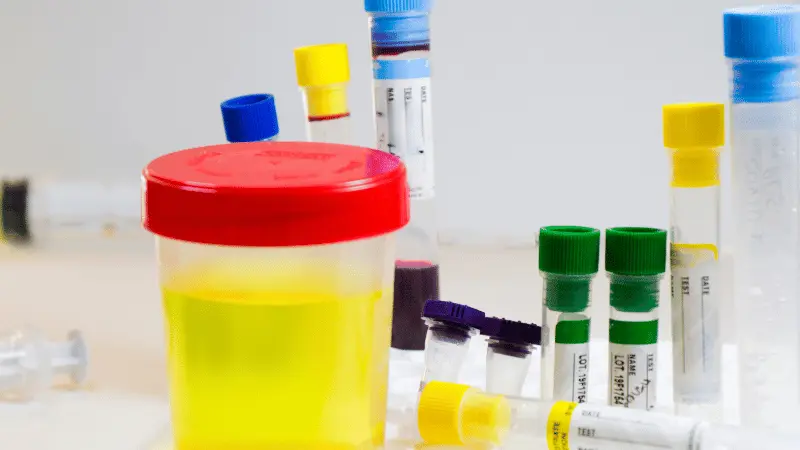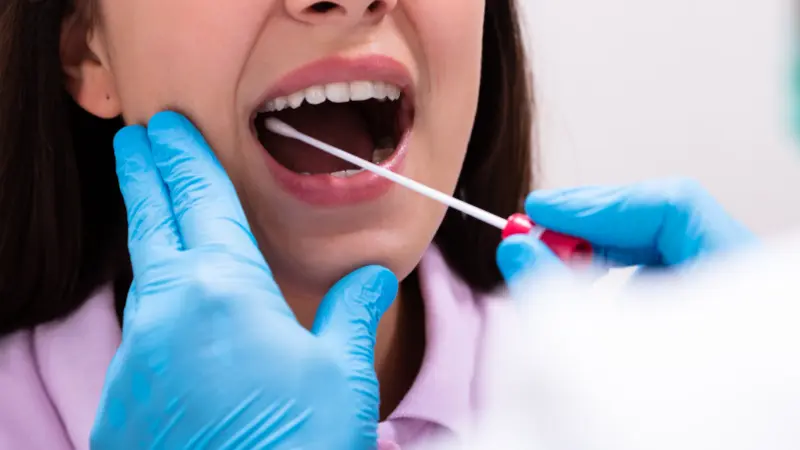Drug testing is a crucial tool employers, law enforcement agencies, and medical professionals use to detect and deter drug use. With the wide variety of drug testing methods available, one can be picky in determining the most appropriate for a particular situation. Several drug tests are available that can detect various drugs through different methods. Each test has its advantages and limitations, and choosing the right one is crucial for accurate results. Let’s explore the different types of drug tests available, how they work, and what drugs can be detected using each test.
Types Of Drug Tests

Drug testing is a process of identifying the presence or absence of drugs or their metabolites in a person’s body.
Drug testing has become an increasingly important tool to ensure the safety and productivity of workplaces around the world. Many organizations, from small businesses to large corporations, use drug testing to identify employees who may be using drugs and to deter substance abuse. Drug testing can also be used in medical settings, such as hospitals or rehabilitation centers, to monitor patients prescribed opioid painkillers or other controlled substances. It can help ensure that patients take their prescribed medications and do not abuse them.
Drug testing is the process of analyzing biological specimens like
- urine,
- blood,
- saliva,
- hair,
- or sweat to detect the presence of drugs or their metabolites.
Urine Drugs Test
Urine drug testing is the most common type of drug testing. It is relatively inexpensive, non-invasive, and can detect recent drug use. Urine drug tests work by analyzing a urine sample for the presence of drugs or their metabolites.
How Urine Drug Tests Work
Urine drug tests typically involve providing a urine sample in a cup. The sample is then sent to a laboratory for analysis. The laboratory will use a process called immunoassay to screen the sample for drugs. If the initial screen is positive, a confirmatory test is performed using gas chromatography-mass spectrometry, which can accurately identify the specific drug and its concentration.
Urine drug tests can detect a wide variety of drugs, including marijuana, cocaine, opiates (such as heroin and morphine), amphetamines, and PCP. The test kit contains a panel of immunoassays that detect the presence of specific drugs or their metabolites in the urine sample.
Pros And Cons Of Urine Drug Testing
The main advantage of urine drug testing is that it is non-invasive and easy to perform. It is also relatively inexpensive compared to other drug testing methods.
However, urine drug testing has several limitations. The test can only detect recent drug use and may not identify chronic drug users who have stopped using drugs before the test. It also has a higher risk of false-positive results, meaning that a person may test positive even if they haven’t used drugs.
Several factors can affect the accuracy of urine drug test results. These include the type of drug being tested for, the frequency and amount of drug use, and the individual’s metabolism and water levels. Certain medications or foods can also interfere with the test and produce false-positive results.
Blood Drug Test
Blood drug testing is another commonly used drug test method. It is more invasive than urine drug testing but can provide more accurate results.
How Blood Drug Test Work
Drug testing using blood samples detects the presence of drugs or their metabolites in the blood. When a person uses drugs, the drugs are absorbed into the bloodstream and circulate throughout the body. Blood drug tests are used to identify recent drug use and can detect a wider range of drugs than urine drug tests, including alcohol.
Pros And Cons
The main advantage of blood drug testing is its high accuracy, which makes it useful in medical settings. It can also detect recent drug use and is less susceptible to false-positive results.
Blood drug testing is more invasive than urine drug testing and requires a trained medical professional to perform the test. It is also more expensive and time-consuming than urine drug testing.
Many factors may affect the accuracy of blood drug test results. These include the type of drug being tested for, the amount of drug use, and the individual’s metabolism and hydration. Some medications or medical conditions can also affect the test results.
Saliva Drug Test

Saliva drug testing is becoming more popular due to its convenience and non-infringing nature. Testing with saliva is a convenient and rapid process that requires minimal preparation, and can be performed on-site.
How Saliva Tests Work
Saliva drug tests detect the presence of drugs in a person’s oral fluid. The test is usually done by swabbing the inside of the mouth with a special collection tool and then inserting the swab into a test device. The test device will then indicate whether or not drugs have been detected in the saliva.
Pros And Cons
One advantage of saliva drug tests is that they are non-invasive and can detect recent drug use. They are also more difficult to adulterate or substitute than urine tests. They may not detect drugs that have been used in the past, and they may not be as accurate as other forms of drug tests.
Several factors can impact the results of a saliva drug test. Some of these factors include:
- The type of drug that was used
- The number of drugs that were used
- The frequency of drug use
- The individual’s metabolism
- The time between drug use and the test
Hair Drug Test
Hair drug testing is a newer drug test method that can detect drug use over a longer period than urine or blood drug tests.
How Hair Drug Test Work
Hair drug tests detect the presence of drugs or their metabolites in the hair. When a person uses drugs, the drugs are absorbed into the bloodstream and circulate throughout the body. Some of the drugs and their metabolites are deposited in the hair follicles, where they can be detected months after drug use.
Pros And Cons
The main advantage of hair drug testing is its ability to detect drug use over a longer period than urine or blood drug tests. It can also detect a wider range of drugs, including marijuana, cocaine, opioids, and amphetamines.
Hair drug testing is more expensive than urine or blood drug testing and takes longer to produce results. It is also susceptible to false-positive results if the individual has been exposed to drugs through second-hand smoke or environmental contamination.
Sweat Drug Testing
Sweat drug testing, also known as sweat patch testing, is a newer method of drug testing that involves collecting and analyzing sweat samples from the skin surface. While saliva drug testing is a relatively new testing method, sweat drug testing is even newer. This alternative form of testing is gaining popularity, particularly in cases where urine testing or saliva testing may not be feasible or practical.
How It Works
Sweat drug tests use a patch or a collector device that is attached to the skin and worn for several days. The patch collects the sweat and releases it into a special testing strip or cartridge. The sample is then analyzed using chromatography to identify the presence of drugs or their metabolites.
Pros And Cons
One of the advantages of sweat drug testing is that it can detect drug use over a longer period than some other testing methods. It may be more appropriate for certain populations, such as children or seniors.
Sweat drug testing also has some limitations. The test may not be as accurate as other testing methods, and the results may be impacted by ambient temperature and humidity factors. In addition, the test may not be able to detect drugs that were used only once or infrequently.
Breathalyzer Drug Test
Breathalyzer drug testing is a method of testing that measures the concentration of drugs or alcohol in a person’s breath. This type of testing is commonly used in law enforcement settings to evaluate impairment due to drug or alcohol use. You might have seen this done frequently for DUI checks.
How Breathalyzer Drug Tests Work
Breathalyzer tests use a handheld device that collects and analyzes the breath sample for specific substances. The device works by detecting the gases exhaled from the lungs, which can indicate the presence of drugs or alcohol. The results can be shown within a few minutes and may require confirmation by a lab test in some cases.
Pros And Cons
Breathalyzer drug tests are quick and can provide an objective measure of impairment. They also have a lower risk of privacy invasion and can be used in remote locations.
Although, breathalyzer drug tests may not be as accurate as blood or urine tests and can be influenced by external factors such as mouthwash or food. Moreover, the device may not be able to detect all types of drugs and may require frequent calibration and maintenance.
Legal implications Of Drug Testing
Drug testing can have legal implications, especially in the workplace. Employers must comply with federal and state laws regarding drug testing, including providing notice to employees, following proper procedures for testing, and protecting employee privacy. Individuals who test positive for drugs may face consequences such as job loss, disciplinary action, or legal charges. However, false-positive drug test results can occur, so individuals need to understand their rights and options if an issue arises.
Conclusion

Drug tests use different methods to detect the presence of drugs in the body. The most common techniques are immunoassays, chromatography, and mass spectrometry. Immunoassays utilize antibodies that bind to specific drugs or metabolites, which produce a color change or a signal that can be measured. Chromatography separates the drug molecules based on their physical and chemical properties and can provide a more accurate result. Mass spectrometry measures the molecular weight and structure of the drugs and their metabolites, providing the most precise identification.
Choosing the right drug test depends on several factors, such as the purpose of testing, the drug of interest, the detection window, the testing method, the cost, and the legal or ethical considerations.
Employers may use urine or blood tests for pre-employment screening or post-accident investigations, while medical professionals may use hair or saliva tests for monitoring drug therapy. Law enforcement may use breathalyzers or blood tests for DUI investigations, while drug treatment facilities may use sweat or oral fluid tests for assessing relapse.
It is important to consult with an expert and follow the guidelines and regulations for each type of drug test to ensure accurate and reliable results.

I’m Cli, also known as Castro. An author of felhus.com
I’ve got great passion for felons and wanna see them live absolutely normal again.
